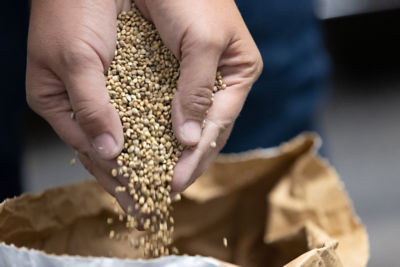Causal Agent
Erwinia tracheiphila
Vector
Acalymma vittatum (striped cucumber beetle)
Diabrotica undecimpunctata howardi (spotted cucumber beetle)
Distribution
North America, Asia, Africa, Europe
Symptoms
This disease is severe on cucumber and melon, but is less damaging to squash and watermelon. Symptoms begin with wilting, which may be confined to individual runners or may involve the entire plant. Plants may wilt at any growth stage, but wilting is often most severe during periods of rapid growth. Affected leaves display marginal chlorosis and necrosis. In time, the entire plant becomes necrotic and dies. A diagnostic procedure for identifying this disease in the field is to make a cut through a symptomatic stem, rejoin the ends and slowly pull the pieces apart. In infected plants, bacteria from the vascular tissue will cohere as filamentous strands between the two pieces.
 Severe wilting of a cucumber due to Erwinia tracheiphila infection. (Courtesy of Thomas A. Zitter)
Severe wilting of a cucumber due to Erwinia tracheiphila infection. (Courtesy of Thomas A. Zitter)
Conditions for Development
Erwinia tracheiphila is transmitted by cucumber beetles. Environmental conditions have little effect on incidence and spread of the disease, but can influence symptom expression. The bacterium is short-lived in dried plant debris, and does not typically survive in crop debris from one season to the next. Weeds and volunteer cucurbits serve as alternate hosts and facilitate survival between crops.
Control
Control cucumber beetles which vector Erwinia tracheiphila to help control this disease. Eliminate all weeds and volunteer cucurbits. Remove and destroy infected plants as soon as they are identified. Rotate out of cucurbits for 2-3 years.



